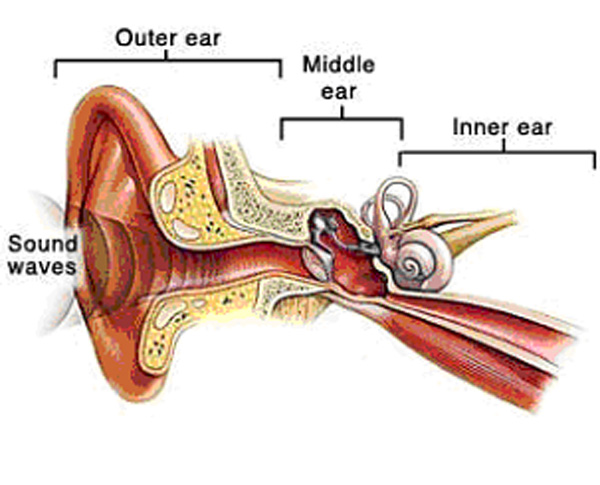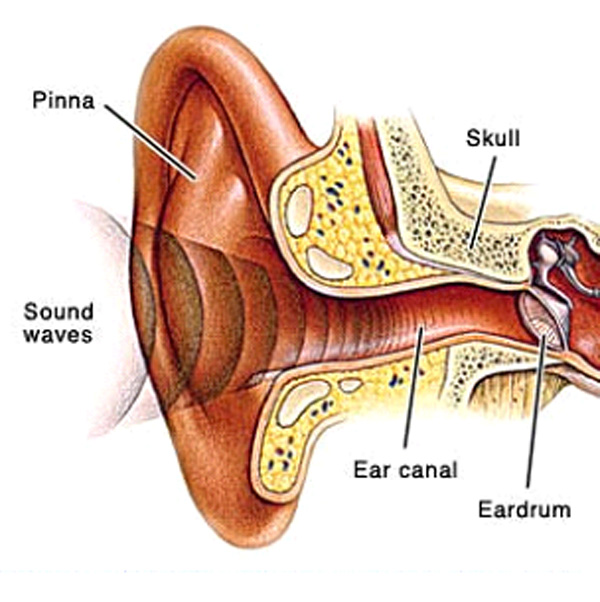Hearing loss
Hearing loss can occur very gradually and many people don’t notice it happening until it has become quite pronounced. However, this may be obvious to the people around them.
One in six people in Australia have hearing loss, and with the ageing of Australia’s population, hearing loss is projected to increase to one in every four Australians by 2050.
Hearing loss is usually a very gradual process. In many cases it goes undetected and untreated for too long, causing irreversible damage.
People often think it is not their hearing but others not speaking clearly which is the problem.
Hearing loss is a natural fact of life, and nothing to be ashamed of. Hearing loss is something that should be spoken about honestly.
We at AudioHearing Melbourne want to help you to put your quality of life first.


How Do We Hear?
These vibrations are transferred to three small bones (malleus, incus and stapes) in the middle ear. When the stapes vibrates, it causes movement of the
The human ear can be functionally divided into four main sections: the outer ear, the middle ear, the inner ear, and beyond the inner ear (retro-cochlear)
Types Of Hearing Loss
The three primary types of hearing loss are conductive, sensorineural and mixed.
Conductive hearing loss occurs when sound is not conducted efficiently through the ear canal to the eardrum and the tiny bones (Ossicles) of the middle ear.
Sensorineural hearing loss occurs when there is damage to the inner ear (cochlea) or to the nerve pathways from the inner ear to the brain.
When a conductive hearing loss occurs in combination with a sensorineural hearing loss, the hearing loss is referred to as a mixed hearing loss. In other words, there may be damage in the outer and/or middle ear and in the inner ear (cochlea) or auditory nerve.
Signs of Hearing Loss
- Muffled quality of speech and other sounds
- Difficulty understanding words, especially against background noise or in a crowd of people
- Difficulty understanding people unless they are facing you
- Thinking that others do not talk properly and mumble
- Frequently asking others to speak more slowly, clearly and loudly
- Difficulty understanding women and children’s voices
- Struggling to hear conversation from a distance
- Needing to turn up the volume of the television or radio
- Difficulties hearing on the telephone
- Avoidance of some social gathering
- Missing the telephone or door bell
- Hearing well in private settings, but not in groups
- Becoming more sensitive to loud sounds
- Experiencing ringing in the ears
Causes Of Hearing Loss
Hearing loss in adults has many causes, such as disease or infection, ototoxic drugs, exposure to noise, tumours, trauma, and the aging process.

Hearing Assessment
A number of tests are available to discover the nature of a hearing difficulty and to help determine effective treatments. The tests include Pure Tone Audiometry (PTA), Speech Discrimination Test and Tympanometry.
Benefits of Treatment
Individuals who have hearing loss are treated by wearing hearing aids, the benefits of wearing hearing aids include
- Better relationships with family members
- Better feelings about themselves
- Improved mental health
- Greater independence and security
- Significant improvements in the quality of their lives
Studies show hearing impaired people who do not wear hearing instruments are more likely to experience depression, anxiety, paranoia and emotional sickness, compared to people who wear hearing instruments.
How Can We Help You?
AUDIOLOGY SERVICES
- Hearing Test
- Hearing Loss- Sudden Hearing Loss
- Dementia & Hearing Loss
- Hyperacusis & Sensitivity to Sounds
- Tinnitus
- Vertigo
- Dizziness
- Hearing Aids
- Invisible Hearing Aids
- Hearing Aid Repair
- Free Pensioners & Veterans Hearing Aids
- Hearing Aid Batteries
- Hearing Services
- Ear Wax Removal
- Custom Ear Plugs
- Work Cover Services
- Industrial Hearing Test
- Hearing Aid Prices
AUDIOHEARING MELBOURNE CLINICS
- South Yarra
- Brighton
- Doncaster
- Armadale
- Prahran Malvern Road
- Prahran High Street
- St Kilda East
- Box Hill
- Balwyn
